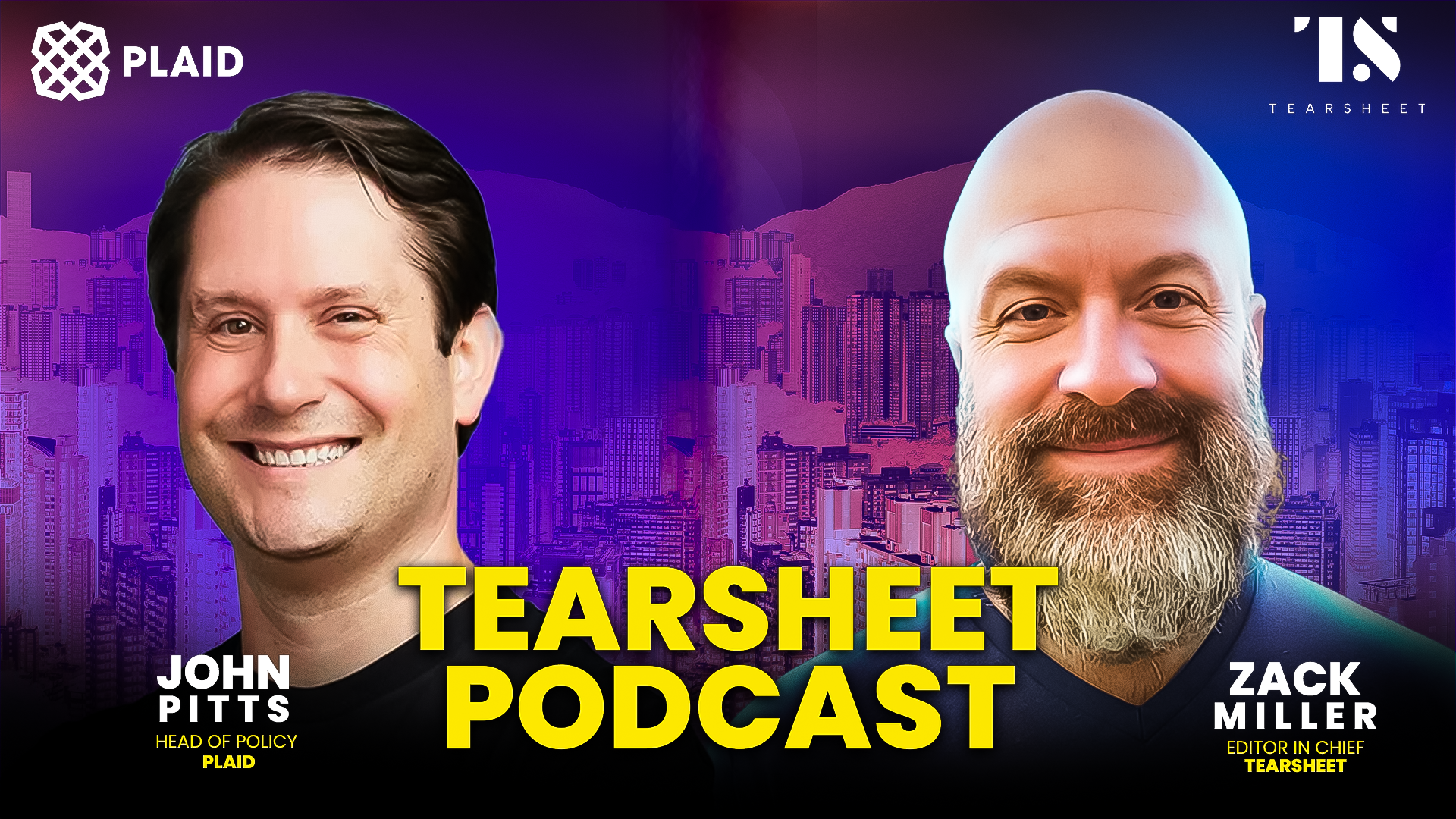APIs have evolved from simple data connectors to the fundamental architecture driving financial innovation. In this episode of the Tearsheet Podcast, I speak with John Pitts. Plaid’s John Pitts reveals how they’re driving open banking and empowering consumer control. He is the Global Head of Policy at Plaid. With a career spanning regulatory and policy roles, Pitts brings a unique perspective to the table. He discusses the evolving role of APIs in financial services. From his role at the Consumer Financial Protection Bureau (CFPB) to leading policy at Plaid, Pitts shares key insights on open banking. He explores how APIs are shaping the future of consumer financial data rights and fintech innovation.
Reflecting on his journey, Pitts shares, “I didn’t realize at the time that I was stepping into this nexus of innovation.” He explains how his role at the CFPB allowed him to witness the early stages of non-bank financial services. He shares how these experiences now inform his work at Plaid. He highlights the critical role APIs play in fostering open finance and enhancing consumer control.
Pitts explores why APIs are essential for modern financial infrastructure. He explains how Plaid is working to bridge gaps in financial data connectivity. Pitts shares his expertise on improving fraud prevention and enabling embedded finance. He emphasizes practical steps to align innovation with consumer needs. His insights highlight the evolving role of APIs in modern financial services.
The Highway Analogy: APIs as the Backbone of Financial Services
Pitts compares the role of APIs in financial services to the construction of a national highway system. “It’s like moving from dirt roads to paved highways,” he says. Pitts emphasizes the necessity of modernized data-sharing mechanisms. Screen scraping once led financial data transfers. But Pitts highlights how APIs now provide faster and safer solutions. Their reliability is transforming how financial data moves securely. “Consumers’ ability to share their data securely is fundamental to unlocking innovation,” he adds. He stresses that the adoption of APIs by financial institutions is critical for open banking.
Consumer Control and Open Banking
A core theme in Pitts’ discussion is consumer control over financial data. He explains how APIs empower consumers to move their financial data seamlessly between platforms. This fosters open banking.
Unlike in other countries where open banking is largely regulated, Pitts notes that in the U.S., market forces have driven API adoption. “We have more open banking in the U.S. than anywhere else,” he states, citing the high number of connected accounts as evidence. Pitts also touches on the regulatory landscape. He highlights the importance of the recently introduced 1033 rule in accelerating API adoption.
Embedded Finance: Beyond Financial Institutions
Pitts highlights how non-financial companies are using Plaid’s APIs for embedded finance. These examples show the growing demand for integrated financial solutions. Landlords are using APIs to enable digital rent payments. Tesla is streamlining car purchases with embedded finance. These examples highlight the rising demand for integrated financial services. “Businesses like John Deere and Tesla are early adopters. They’ve embedded financial tools to improve user experiences,” Pitts explains. This gradual adoption, he suggests, will soon speed up as regulatory clarity improves.
Digital Fraud and Risk Management
Digital fraud is a growing concern in the financial services industry, and APIs offer a potential solution. Pitts describes how banks and fintechs can leverage APIs to share data and build network-level defenses against fraud. “Fraud prevention is one of the biggest opportunities in open finance,” he notes. Pitts emphasizes its importance for consumer trust. Banks can also use APIs to provide consumers with tools to monitor and manage their connected accounts. Pitts argues that these innovations can strengthen relationships between banks and their customers.
The Strategic Opportunity of API Adoption
Pitts urges financial institutions to see API adoption as both a compliance need and a strategic opportunity. It’s a chance to enhance innovation and engagement. He highlights how APIs can help banks deepen customer engagement by becoming the “home base” for financial activity. “When a consumer picks one account as their linked account, their usage of that account increases,” Pitts observes. He suggests that banks can leverage APIs to solidify their role in a consumer’s financial ecosystem.
The Big Ideas
1. APIs Are the Backbone of Modern Financial Services. They serve as the foundation for modern financial services. This enables secure, efficient, and scalable data sharing. “It’s like moving from dirt roads to highways,” Pitts explains.
2. Consumer Control Powers the Future of Open Banking. APIs empower consumers to access and share their financial data across platforms. This fosters innovation. “The U.S. has more connected accounts than anywhere else,” Pitts notes.
3. Embedded Finance Is Becoming a Key Use Case for APIs. Companies outside the financial sector, such as Tesla and John Deere, are adopting APIs for integrated financial services.
4. APIs Enable Stronger Collaboration to Prevent Digital Fraud. They facilitate data sharing among financial institutions, creating stronger defenses against digital fraud. “Greater data sharing protects consumers,” says Pitts.
5. API Adoption Is Both a Compliance Need and a Strategic Opportunity. Financial institutions can use APIs to increase consumer engagement and maintain account primacy.
Listen to the full episode
Subscribe: Apple Podcasts I SoundCloud I Spotify
Watch the full episode
Read the transcript (TS Pro subscribers)












